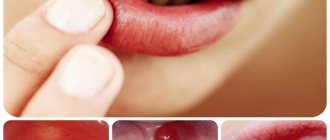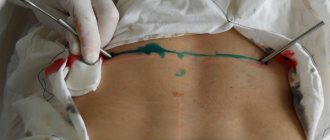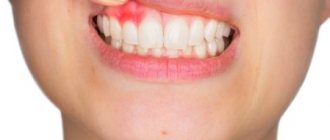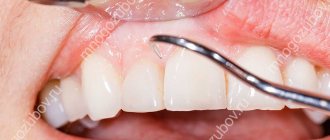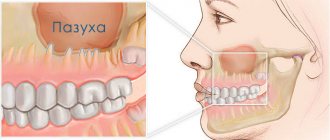Exudative erythema multiforme (EEM) - symptoms and treatment
Infectious-allergic MEE, including herpes-associated[13], is characterized by an acute onset of the disease. It can be manifested by fever, general weakness, body aches, headache, sore throat and other symptoms.
Often, a few days before an exacerbation of MEE, a herpes infection is activated in patients - herpes appears on the lips or a relapse of genital herpes occurs[8].
Rashes characteristic of MEE usually begin to appear 1-2 days after the onset of prodromal phenomena. In this case, general symptoms usually subside.
The localization of the rash is very diverse. It can appear on both the skin and mucous membranes.
Skin manifestations
The skin is usually marked by clearly defined rounded red-pink spots and flat, edematous papules, which increase in size from 2-3 mm to 3 cm in diameter. In the infectious-allergic form, the spots are usually somewhat smaller and do not tend to merge. They can cause itching and burning.
The predominant localization of rashes is on the extensor side of the arms and legs, the back of the feet and hands, on the face and in the genital area. Basically, they are located symmetrically on the body, often in groups in the form of arcs or garlands.
As the papule grows, its center begins to sink and change color to a more bluish color; a red-pink rim remains along the periphery - thus, the elements of the rash acquire the characteristic appearance of a “target” (sometimes they are compared to a “bull’s eye” or “cockade”) [4] .
Afterwards, bubbles form in their center - vesicles and bullous elements. They contain serous or bloody exudate. When they burst, the blisters form yellowish or brown-brown crusts and eroded surfaces.
As a result, elements of varying degrees of development are simultaneously present on the patient’s body - spots, papules and blisters, turning into crusts and erosions. That is why erythema is called multiforme.
At intervals of several days, new groups of rashes may form. This may delay the process. But usually final regression occurs within about two weeks.
The frequency of exacerbations can vary from 1-2 to 5-12 times a year. In rare severe cases, one exacerbation can turn into another, with virtually no clear interval. During this time, previous rashes do not completely resolve.
Rashes on mucous membranes
Single elements may appear on the oral mucosa, which do not cause much concern. In more severe cases, the lesions are so extensive and painful. They make it difficult to speak and eat even homogeneous and liquid food[12][13].
The resulting blisters burst quite quickly, so the patient does not have time to notice them - usually erosions are already detected, on which filmy fibrinous deposits of a light or brown hue can sometimes be seen.
In the area of the red border of the lips, very painful, cracking, bloody crusts may appear, which do not allow the patient to fully open his mouth.
Less commonly, rashes are found on the mucous membranes of the eyes and genitals. In complicated cases, secondary infection may occur, scarring and synechiae (adhesions) may form.
Etiology
Etiological factors: with the infectious-allergic form of exudative erythema multiforme, patients exhibit sensitization to bacterial and viral allergens. The source of sensitization is foci of chronic infection (tonsillitis, otitis, sinusitis, cholecystitis). Factors that provoke the onset of the disease and its relapses are hypothermia, fatigue, exacerbation of chronic somatic diseases (tonsillitis, bronchitis, otitis media, etc.).
The cause of the toxicoallergic form is often medications (antibiotics, NSAIDs, synthetic vitamins, etc.), as well as food and household allergens.
Clinical manifestations
An acute onset is characteristic, like an infectious disease: body temperature rises to 39-40ºC, symptoms of intoxication of the body develop.
Typical complaints: pain, burning, sore mouth, inability to eat, deterioration of general condition, rashes in the mouth and on the skin, etc.
When examining the oral mucosa, extensive erosive surfaces are identified, covered with a fibrinous whitish or grayish-yellow coating. Along the edges of the erosions, fragments of blisters are observed, when pulled, the healthy epithelium does not peel off (negative Nikolsky's sign). There is a primary polymorphism of rashes: papules, erythema, blisters and blisters, after opening of which erosions and aphthae are formed).
In the oral cavity, rashes may vary: hemorrhagic manifestations (bubbles with hemorrhagic exudate, hemorrhages, petechiae and bleeding of the mucous membranes); ulcerative-necrotic (these lesions are caused by allergic alteration of the oral mucosa, the addition of a secondary infection, aggravated by deterioration of hygiene and self-cleaning of the oral cavity due to pain, which leads to significant intoxication and the appearance of a putrid odor); catarrhal (erythema and swelling of the mucous membranes).
The skin is characterized by maculopapular elements of rashes that slightly rise above the surrounding surface. The central part of the element subsequently, after opening the papule, sinks a little and acquires a bluish tint, while the peripheral part retains a pink-red color, forming a “cockade”.
Favorite places for localization of rashes with exudative erythema multiforme: the dorsum of the hands, feet, extensor surfaces of the forearms, legs, elbow and knee joints, palms and soles. A distinctive feature of the toxic-allergic form of exudative erythema multiforme is the absence of seasonal relapses; the history shows a connection with taking medications, after which a relapse occurs.
Stevens-Johnson syndrome is a severe form of MEE. In this case, the mucous membranes of the mouth, nose, eyes, genitourinary organs, and gastrointestinal tract are simultaneously affected. and skin.
Lyell's syndrome or toxic epidermal necrolysis is the most severe form of MEE. In this case, almost all COs are involved in the process, including internal organs; extensive skin surface is damaged with detachment of the epidermis, the formation of hemorrhagic blisters and subsequent erosion.
Nikolsky's sign is positive only in the area of blistering. The course of the disease is continuous, relapsing, accompanied by dehydration, shock, secondary infection and septicemia.
Types of pathology
Erythema is classified according to the type of vessels affected:
- active - occurring with a sharp expansion of the lumen of arterial vessels, accompanied by an acute inflammatory process, with bright redness of the skin, increased temperature, swelling and soreness of the skin;
- passive - formed when blood stagnates in the venous vessels during their expansion, accompanied by the appearance of bluish-red or burgundy spots, mainly accompanying inflammation with a chronic course.
Each variety is caused by different causative factors and requires a separate therapeutic approach.
Based on etiology, the following types of erythema are distinguished:
- non-infectious - which are the physiological reaction of the body to external or internal irritants (solar ultraviolet radiation, critically high or low temperature, allergens, etc.);
- infectious - caused by the penetration of infection into the skin capillaries through the surface of the epidermis, from the systemic bloodstream or through the mucous membrane.
Non-infectious manifestations usually do not require special treatment, as they go away on their own after the action of the provoking factor ceases. Infectious reactions are expressed in an inflammatory process that occurs in an acute or chronic form and is accompanied by certain symptoms.
Nodular pathologists
The causative agent of erythema nodosum is usually streptococcus, and less often - some other infections. It often occurs against the background of tonsillitis, scarlet fever, and tuberculosis. You can recognize it by the following signs:
- rashes of bright red color, with bulges forming in the subcutaneous layer;
- asymmetrically located spots;
- gradual bluing of the spots, then yellowing, similar to the resorption of bruises;
- presence of fever;
- painful sensations and itching in the affected areas of the skin;
- the presence of multiple seals on the legs.
The patient is prescribed a course of antibiotics, antihistamines, as well as external treatment with antiseptics.
Infectious pathologies
Various pathogens can provoke the development of infectious inflammation of the skin - bacteria, fungi, viruses or parasites. This form is characterized by an acute course, which can turn into a chronic form. The patient needs immediate medical attention.
In its acute form, the most common erythema infectiosum in children is caused by parvovirus B19. It is characterized by the sudden onset of the disease, the characteristic signs of which are:
- rapidly rising body temperature;
- muscle pain, headache;
- the appearance of a red rash covering the face and body on the third or fourth day after the onset of the disease;
- gradual increase and closure of spots.
After some time, clinical manifestations gradually fade away until they disappear completely. If left untreated, the process can become chronic. The patient remains able to transmit the infection to healthy people for several days after recovery.
Multiform exudative pathologies
The etiology is still not fully understood. The cause is believed to be an infection present in the body. The disease is usually chronic, with constant relapses. Symptoms of erythema multiforme exudative type are:
- slight increase in temperature;
- pain in muscles and joints;
- rashes with a central papule and clear boundaries of spots, located mainly on the bends of the limbs;
- uneven color of spots;
- symmetrical location of rashes on the body;
- tendency to grow with the formation of “garlands”;
- slight deterioration in general health.
The main difficulty is diagnosis, since the signs partially correspond to a number of other diseases. Before prescribing a course of therapy, differential diagnosis is carried out. Medicines are selected taking into account the age characteristics of the patient.
Non-infectious manifestations
In accordance with the causes that caused them, erythema of non-infectious etiology is divided into:
- infrared - provoked by infrared radiation, the power of which was not enough for a full burn, and manifested in the form of a reddish vascular network;
- X-ray – caused by exposure to X-rays or high-frequency electromagnetic waves;
- symptomatic - appearing after contact with an allergenic agent in the form of hyperemic convex spots of irregular shape;
- idiopathic - formed under the influence of heredity as an increase in the diameter of capillaries at the junction with the vascular network, with redness of the palmar surfaces;
- cold - formed when the skin is exposed to low temperatures, manifesting itself in the form of a bluish-reddish rash with local swelling and itching;
- ultraviolet - appearing as a result of exposure to ultraviolet radiation on the skin.
In most cases, when the action of the provoking factor ceases, the redness disappears after some time. In some cases, symptomatic help is required.
